Growing basil at home is one of the most gratifying and aromatic experiences a home gardener can enjoy. With its bright green leaves and sweet, slightly spicy flavor, basil (Ocimum basilicum) is not just a staple in kitchens across the globe—it’s also easy to grow, fast to harvest, and perfect for indoor windowsills or outdoor gardens. Whether you’re a gardening novice or a culinary enthusiast, learning how to plant and care for basil will bring a fresh burst of flavor and greenery into your home.
In this comprehensive guide, we’ll explore every aspect of planting basil—from seed selection and soil preparation to harvesting and preserving your crop—so you can enjoy this delightful herb year-round.
Introduction: Why Grow Basil at Home?
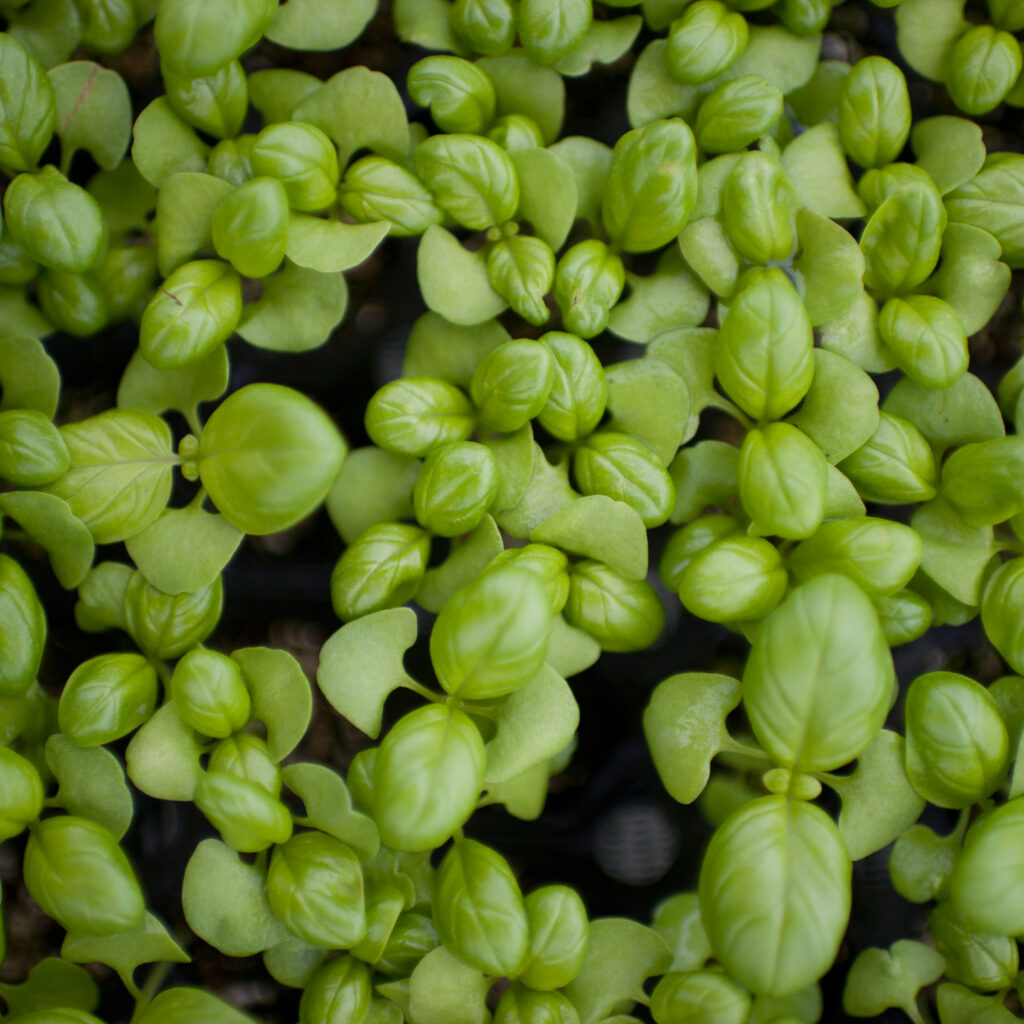
Basil is a warm-weather herb native to India and other tropical regions of Asia. It’s widely used in Italian, Thai, and Mediterranean cuisines, elevating dishes like pesto, caprese salad, pasta, and soups. Beyond its culinary appeal, basil offers medicinal properties, including anti-inflammatory and antibacterial effects, making it a staple in herbal remedies.
Growing basil at home is cost-effective, reduces food waste, and ensures you always have fresh leaves on hand. Plus, its lush green foliage and fragrant aroma make it a beautiful addition to any indoor or outdoor garden.
Step 1: Choosing the Right Basil Variety
There are many varieties of basil, each with its own flavor, leaf shape, and growth habit. Some popular options include:
- Genovese Basil: Classic Italian variety with large, aromatic leaves.
- Thai Basil: Spicy, licorice-flavored; perfect for Asian dishes.
- Lemon Basil: Citrusy flavor ideal for teas and desserts.
- Purple Basil: Eye-catching dark foliage with a mild, spicy flavor.
- Holy Basil (Tulsi): Medicinal variety revered in Ayurvedic traditions.
For culinary use and easy growth, Genovese or Sweet Basil is highly recommended.
Step 2: Deciding Between Seeds and Starter Plants
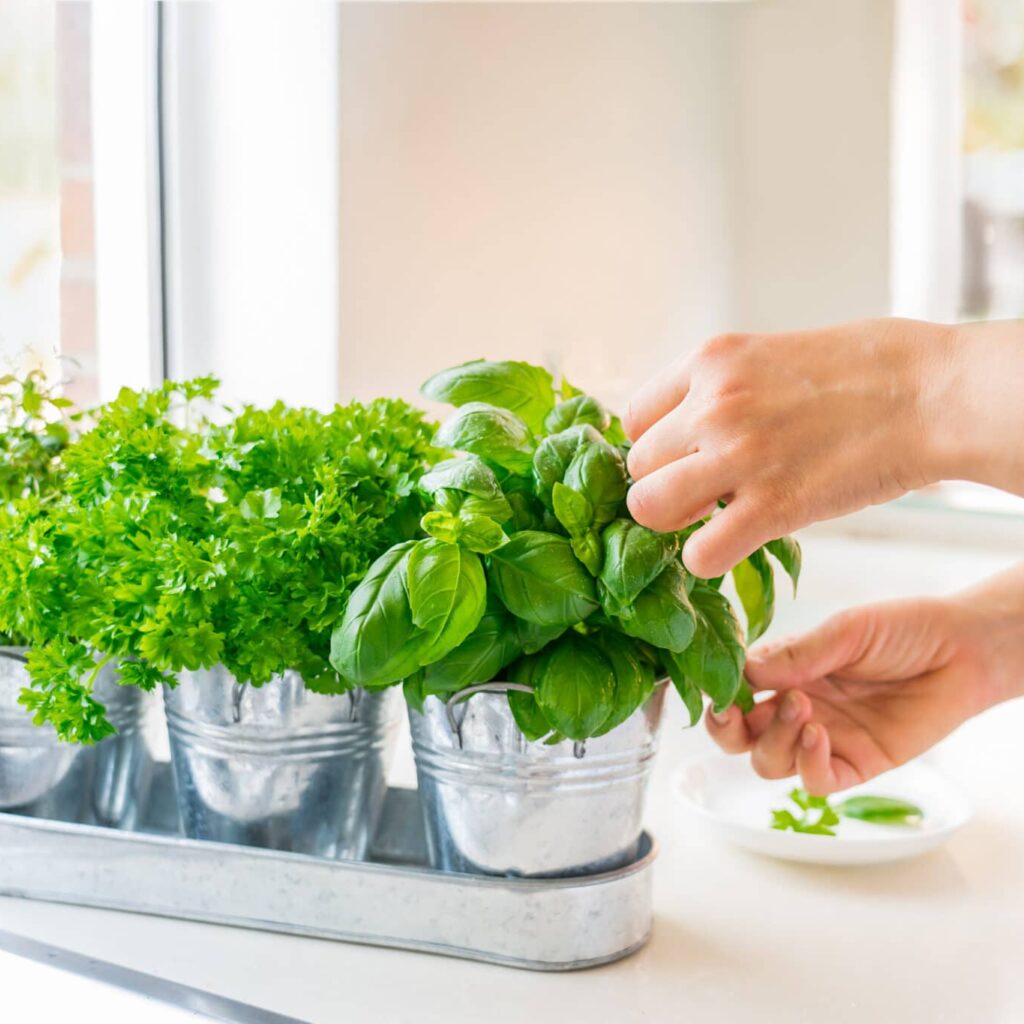
You can grow basil from either seeds or starter plants.
Growing from Seeds:
- Cheaper and offers more variety.
- Takes 7–14 days to germinate.
- Ideal for starting in seed trays or small pots.
Using Starter Plants:
- Faster harvest (ready in 3–4 weeks).
- Convenient for beginners.
- Available at garden centers or nurseries.
Whichever method you choose, basil adapts well and grows quickly with the right care.
Step 3: Preparing Soil and Containers
Soil Requirements:
- Well-draining soil rich in organic matter.
- Slightly acidic to neutral pH (6.0–7.5).
- Add compost or aged manure to improve fertility.
Container Tips:
- Choose a pot at least 6 inches deep with drainage holes.
- For outdoor planting, ensure garden beds get full sun and good air circulation.
Pro Tip: Avoid heavy clay soil or overly compacted mixes, which can lead to root rot.
Step 4: Planting Your Basil
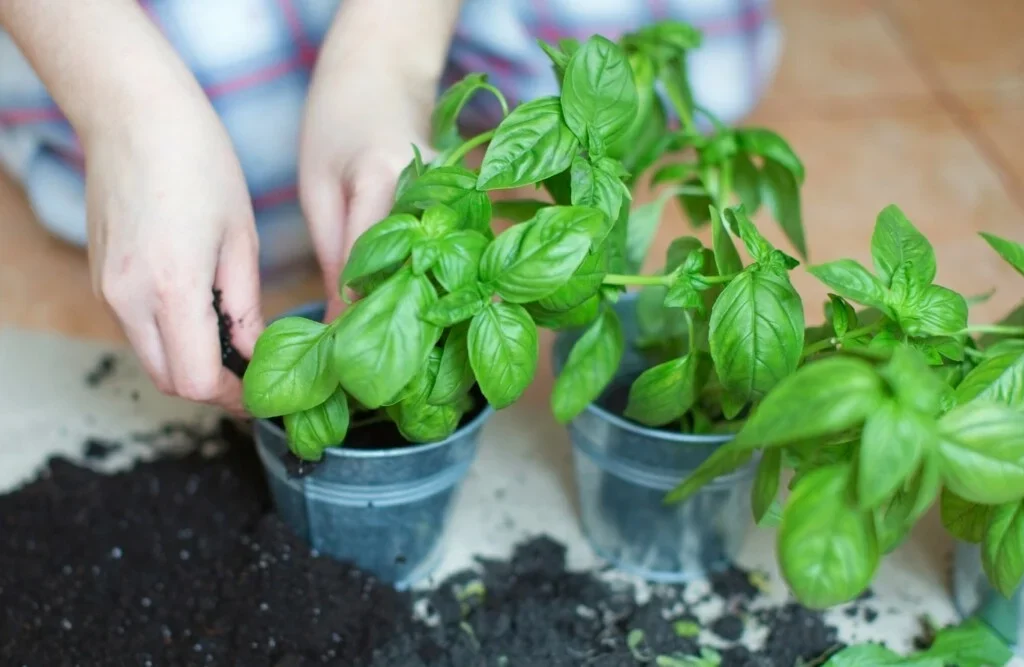
If Starting from Seeds:
- Fill a small pot or seed tray with moistened potting mix.
- Sow seeds 1/4 inch deep and lightly cover with soil.
- Keep soil moist and place in a warm, sunny location (70–75°F or 21–24°C).
- Seeds should sprout within 1–2 weeks.
If Using Starter Plants:
- Gently remove the plant from its nursery container.
- Transplant it into a larger pot or garden bed.
- Space multiple plants 10–12 inches apart to allow airflow.
After planting, water lightly to settle the soil around the roots.
Step 5: Light, Water, and Temperature Needs
Sunlight:
- Basil loves full sun, at least 6 hours of direct sunlight daily.
- If indoors, place on a south-facing windowsill or use grow lights.
Watering:
- Keep soil consistently moist but not waterlogged.
- Water early in the day to prevent fungal issues.
- Avoid wetting the leaves—water at the base instead.
Temperature:
- Basil thrives in warm temperatures (70–90°F / 21–32°C).
- It is sensitive to cold—bring potted plants indoors when temps drop below 50°F (10°C).
Step 6: Fertilizing for Optimal Growth
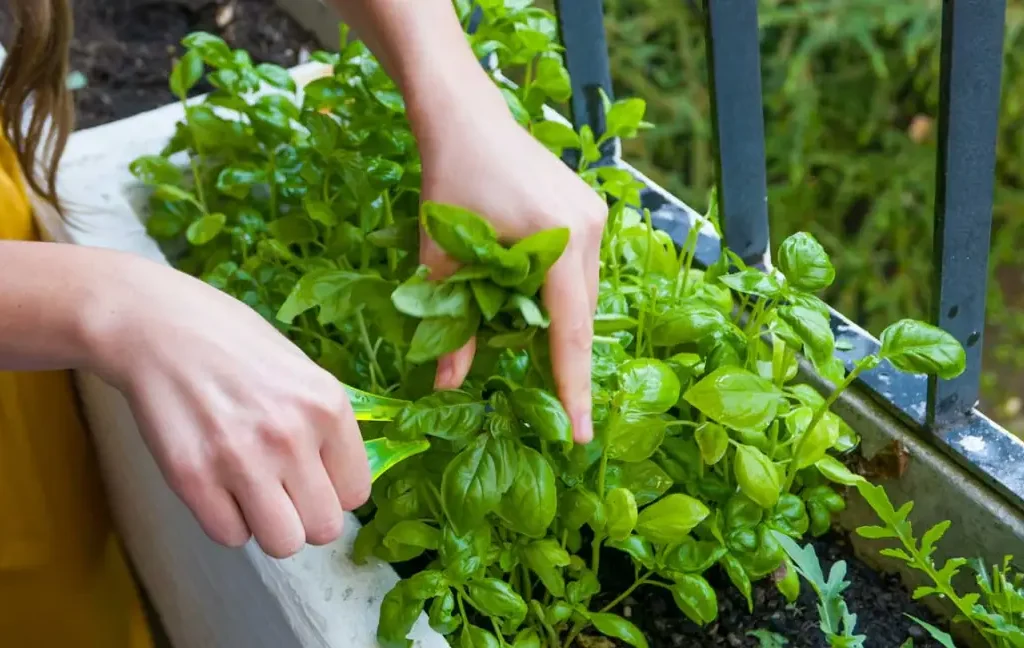
Basil grows quickly and benefits from occasional feeding.
- Use a balanced liquid fertilizer (like 10-10-10 or organic compost tea).
- Apply every 3–4 weeks during the growing season.
- Avoid over-fertilizing, as it may reduce the plant’s aromatic oils.
Natural Boost: Mix in organic compost around the base of the plant for a steady nutrient supply.
Step 7: Pruning and Pinching for Bushier Plants
Proper pruning is the secret to lush, bushy basil plants.
How to Prune:
- When the plant has at least 6 leaves, pinch off the top set of leaves above a leaf pair.
- Continue pruning every 1–2 weeks.
- Always pinch just above a set of leaves to encourage branching.
Bonus Tip: Remove any flower buds as soon as you see them. Flowering redirects energy from leaf growth and can make the plant bitter.
Step 8: Harvesting Your Basil
You can start harvesting basil once the plant is about 6–8 inches tall.
Best Practices for Harvesting:
- Harvest in the morning when leaves are most flavorful.
- Use clean scissors or pinch with fingers.
- Never remove more than one-third of the plant at a time.
Regular harvesting keeps the plant productive and prevents bolting (premature flowering).
Step 9: Dealing with Pests and Diseases
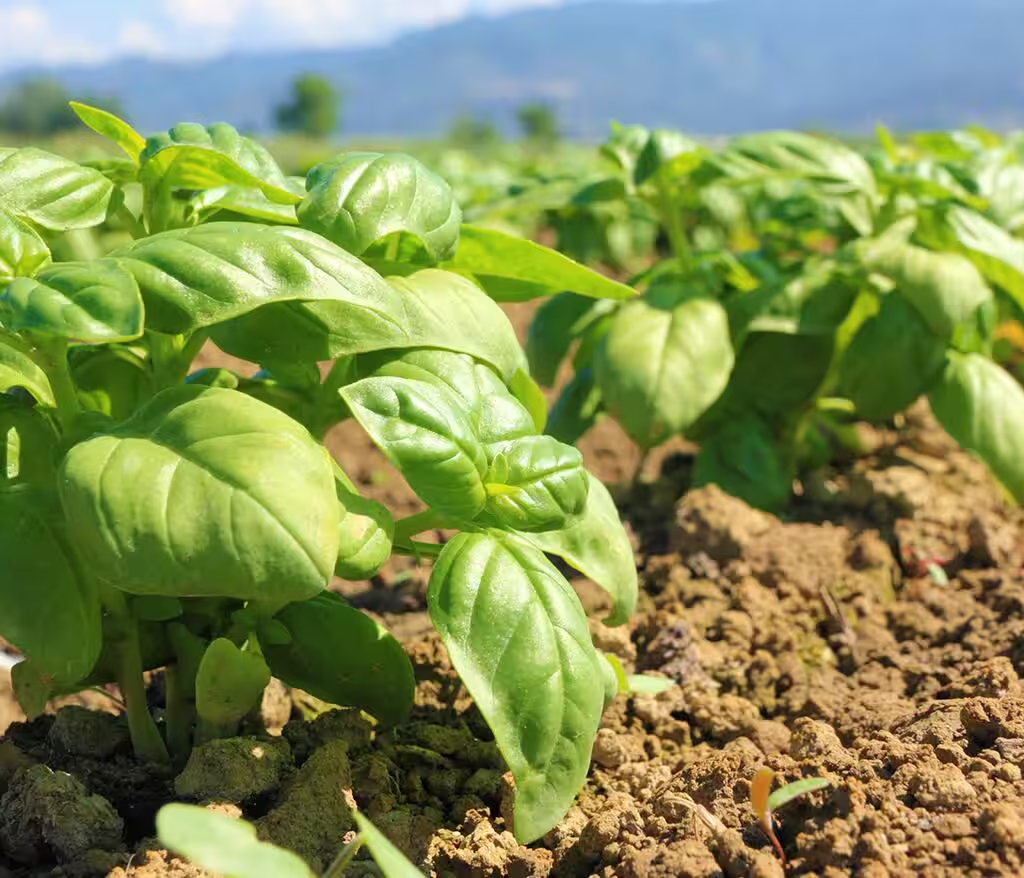
Basil is relatively easy to grow, but it can fall prey to a few pests and diseases.
Common Pests:
- Aphids
- Whiteflies
- Slugs and snails
- Spider mites
Treat with insecticidal soap, neem oil, or a gentle hose spray.
Common Diseases:
- Downy mildew
- Root rot (due to overwatering)
- Leaf spot
Ensure good air circulation, avoid overhead watering, and maintain clean soil to prevent disease.
Step 10: Preserving Your Basil Harvest
If you have more basil than you can use, preserve it for later.
Drying:
- Hang small bunches upside down in a dry, dark space.
- Once dried, crumble and store in an airtight container.
Freezing:
- Chop fresh basil and freeze in ice cube trays with olive oil or water.
- Use cubes in soups, stews, and sauces.
Making Pesto:
- Blend basil with garlic, pine nuts, Parmesan, and olive oil for a classic pesto sauce.
- Store in the fridge or freeze for future use.
Conclusion: Bring the Taste of Summer to Your Kitchen All Year Long
Planting basil at home is more than just a gardening activity—it’s an invitation to elevate your meals, connect with nature, and create a sustainable culinary lifestyle. With just a bit of sunlight, water, and care, you can cultivate fresh, fragrant leaves right at your fingertips.
Whether you enjoy it fresh in a caprese salad, blended into a pesto, or brewed into a soothing herbal tea, homegrown basil offers unmatched flavor and satisfaction. So, grab a pot, sow a few seeds, and let your basil-growing journey begin!





Leave A Comment